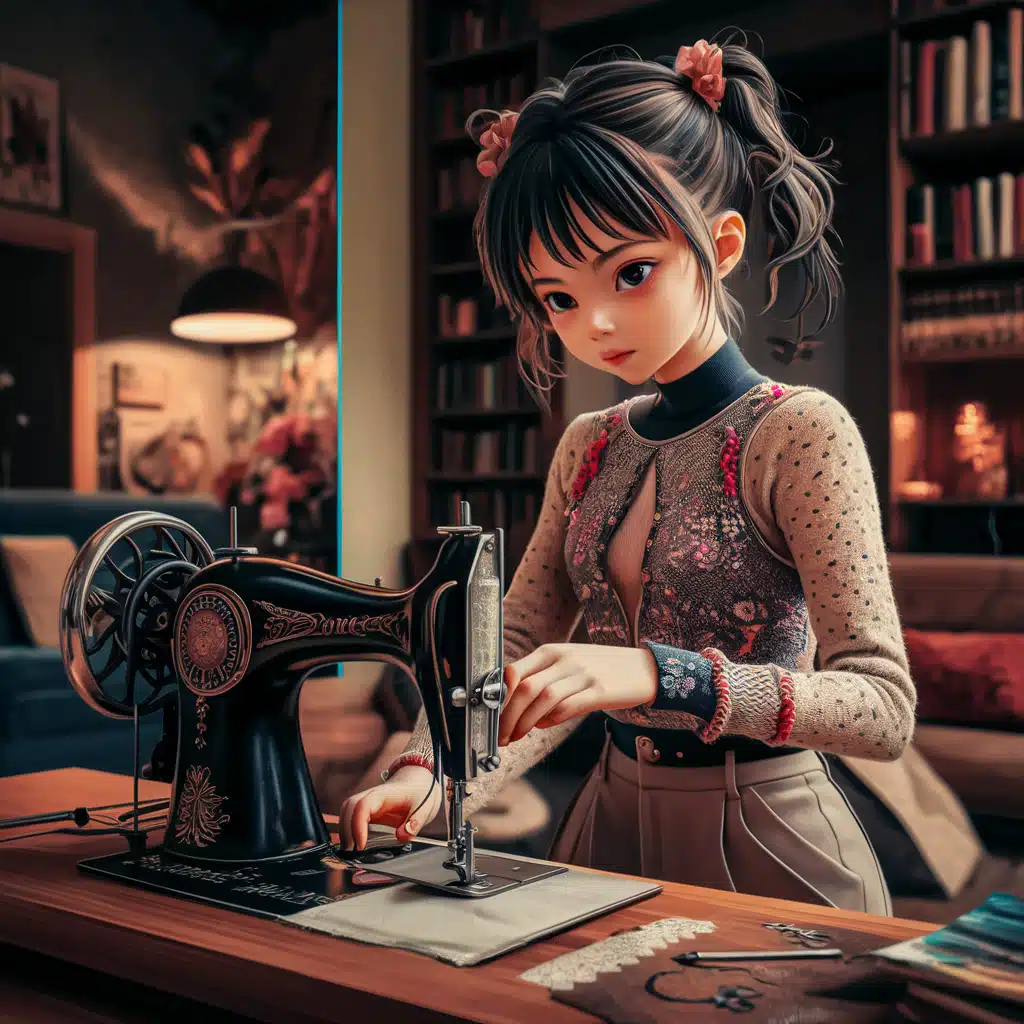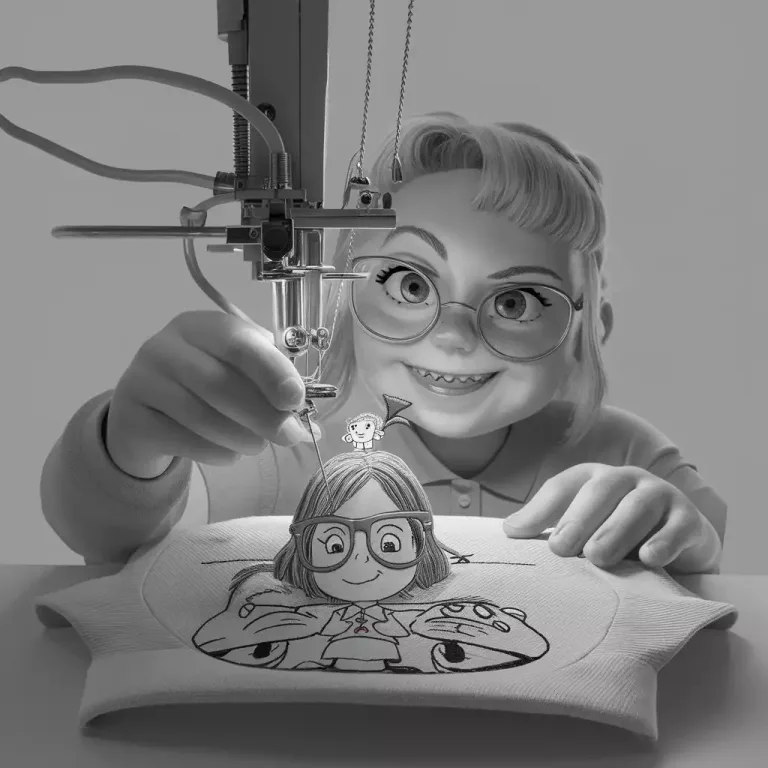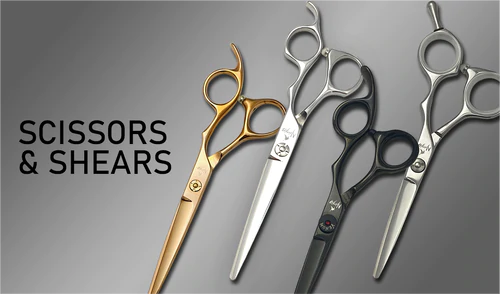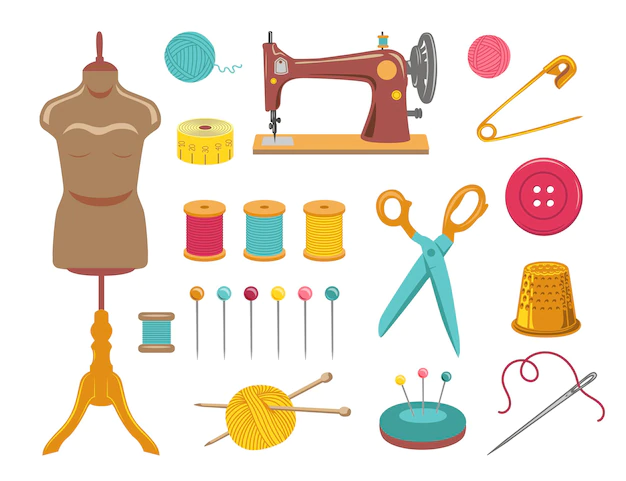A Comprehensive Step-by-Step Guide
Are you new to sewing or struggling with your machine’s threading process? You’re not alone! Proper threading is crucial for achieving clean, even stitches and avoiding frustrating issues like thread bunching or breaking.
In this comprehensive guide, we’ll walk you through the process of threading your sewing machine correctly and answer some frequently asked questions to help you become a threading expert.
Step-by-Step Guide to Threading Your Sewing Machine
- Raise the presser foot and needle
- Place your thread spool on the spool pin
- Guide the thread through the thread guide
- Lead the thread around the tension dial
- Thread the take-up lever
- Guide the thread through the lower thread guides
- Thread the needle from front to back
- Pull about 6 inches of thread through the needle
- Thread the bobbin and insert it into the bobbin case
- Raise the bobbin thread
Now, let’s dive into some frequently asked questions to help you master the art of threading your sewing machine.
FAQ: Threading Your Sewing Machine
Q1: Why is it important to thread my sewing machine correctly?
A: Proper threading ensures that your machine creates even, consistent stitches. Incorrect threading can lead to a variety of issues, including:
- Skipped stitches
- Thread bunching or nesting
- Broken threads
- Uneven tension
- Fabric puckering
Correct threading allows the upper and lower threads to interlock properly, creating strong, attractive seams.
Q2: My machine came pre-threaded. Do I still need to learn how to thread it?
A: Yes, absolutely! While it’s convenient that your machine came pre-threaded, you’ll need to rethread it eventually when you run out of thread or want to change colors. Learning to thread your machine is an essential skill for any sewist.
Q3: How often should I rethread my machine?
A: You should rethread your machine:
- When changing thread colors
- If you run out of thread
- When you experience persistent stitching problems
- After cleaning or maintaining your machine
- If the thread breaks or comes unthreaded during sewing
Q4: What’s the difference between threading the upper thread and the bobbin thread?
A: The upper thread is the one visible on top of your fabric and goes through the needle. The bobbin thread comes from underneath and interlocks with the upper thread to create a stitch. Both need to be threaded correctly for proper stitch formation.
Q5: Why does my thread keep breaking?
A: Thread breakage can occur for several reasons:
- Incorrect threading
- Old or low-quality thread
- Incorrect tension settings
- Bent or damaged needle
- Thread catching on rough spots in the thread path
Ensure you’re using good quality thread appropriate for your fabric and that your machine is threaded correctly.
Q6: My machine has a built-in needle threader. Should I use it?
A: Built-in needle threaders can be very helpful, especially for those with vision or dexterity issues. However, it’s still important to know how to thread the needle manually in case the built-in threader malfunctions or breaks.
Q7: Why is it important to raise the presser foot when threading?
A: Raising the presser foot releases the tension discs, allowing the thread to seat properly between them. If you thread with the presser foot down, the thread may not be correctly positioned in the tension mechanism, leading to tension problems.
Q8: How do I know if my bobbin is threaded correctly?
A: When you pull on the bobbin thread, the bobbin should rotate counterclockwise (for front-loading bobbins) or clockwise (for top-loading bobbins). If it spins in the opposite direction, it’s threaded incorrectly.
Q9: What’s the best way to insert the bobbin into the bobbin case?
A: For most machines:
- Hold the bobbin so the thread comes off counterclockwise
- Drop it into the bobbin case
- Guide the thread through the slot in the bobbin case
- Pull the thread under the tension spring until you hear a click
Always consult your machine’s manual, as some models may have slightly different instructions.
Q10: Why is my thread bunching up underneath my fabric?
A: Thread bunching, also known as “bird nesting,” is often caused by:
- Incorrect upper threading
- Incorrect bobbin insertion
- Unbalanced tension settings
- Using the wrong size needle for your thread
Double-check your threading and tension settings if you experience this issue.
Q11: How tight should the thread tension be?
A: The ideal tension setting varies depending on your fabric and thread. As a general rule, your stitches should look the same on both sides of the fabric. If you see loops on the underside, the upper tension is too loose. If you see loops on top, the upper tension is too tight.
Q12: Can I use any thread in my sewing machine?
A: While most sewing machines can handle a variety of threads, it’s best to use good quality, all-purpose thread for general sewing. Specialty threads (like metallic or heavy-duty threads) may require tension adjustments or special needles.
Q13: Do I need to change my needle when I rethread my machine?
A: Not necessarily, but it’s a good habit to change your needle regularly – about every 8-10 hours of sewing time or at the start of each new project. A fresh needle ensures clean, even stitches and can prevent damage to your fabric.
Q14: My thread keeps coming unthreaded from the needle. What am I doing wrong?
A: This could be due to:
- Not leaving a long enough tail when you thread the needle
- The thread take-up lever not being at its highest position when you start sewing
- The needle being inserted incorrectly
- Using the wrong size needle for your thread
Ensure you leave a 6-inch tail and always start with your needle and take-up lever in the highest position.
Q15: Is it normal for threading to be frustrating at first?
A: Absolutely! Threading a sewing machine can be tricky when you’re first learning. Don’t get discouraged – with practice, it will become second nature. Consider marking the thread path on your machine with tape or a marker to help you remember the correct route.
Remember, proper threading is the foundation of successful sewing.
Take your time, follow the steps carefully, and don’t hesitate to consult your machine’s manual if you’re unsure. With practice, you’ll be threading your machine like a pro in no time!
Related Posts
Discover relevant articles, tutorials, and tips to improve your skills and explore new techniques.
Stay inspired and connected to our embroidery community.






